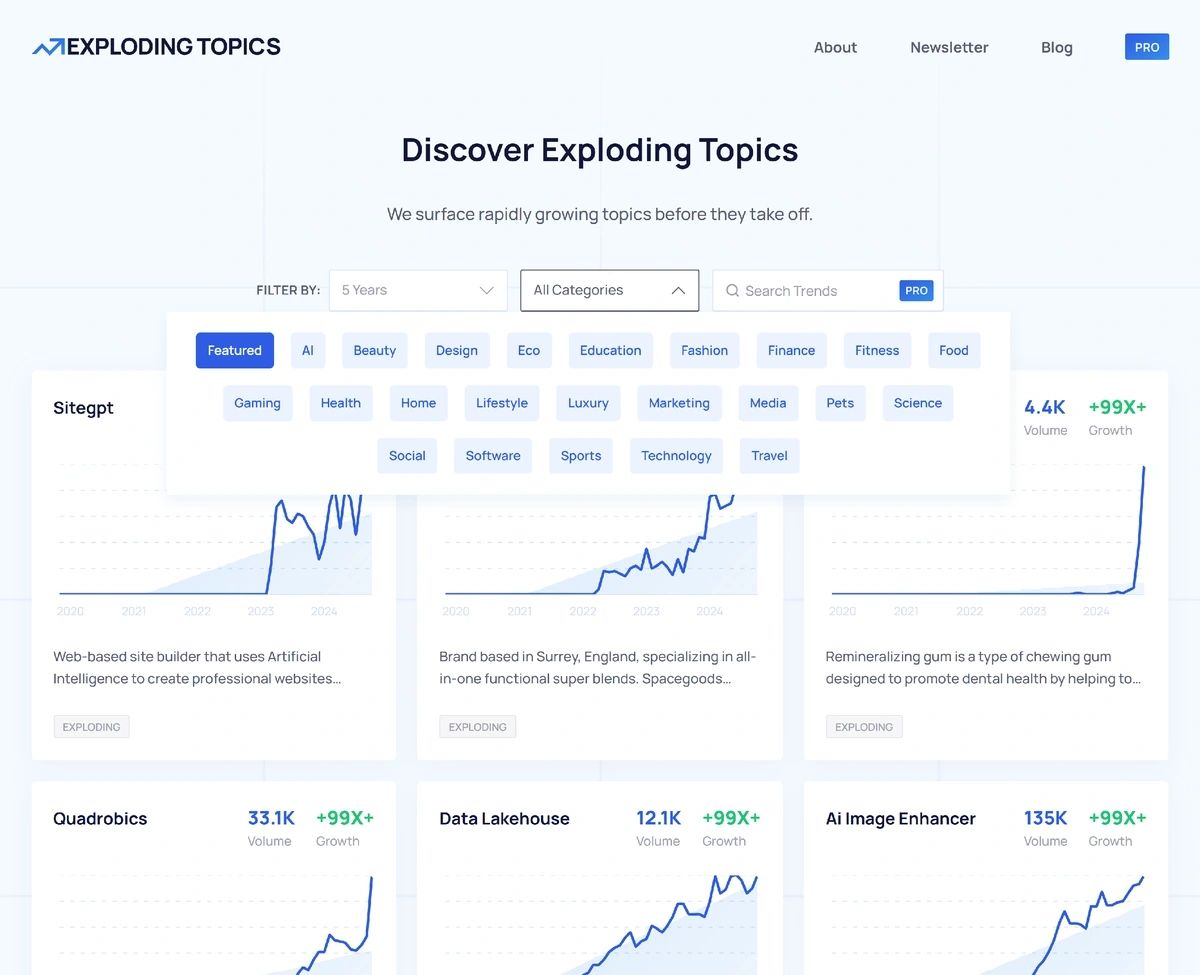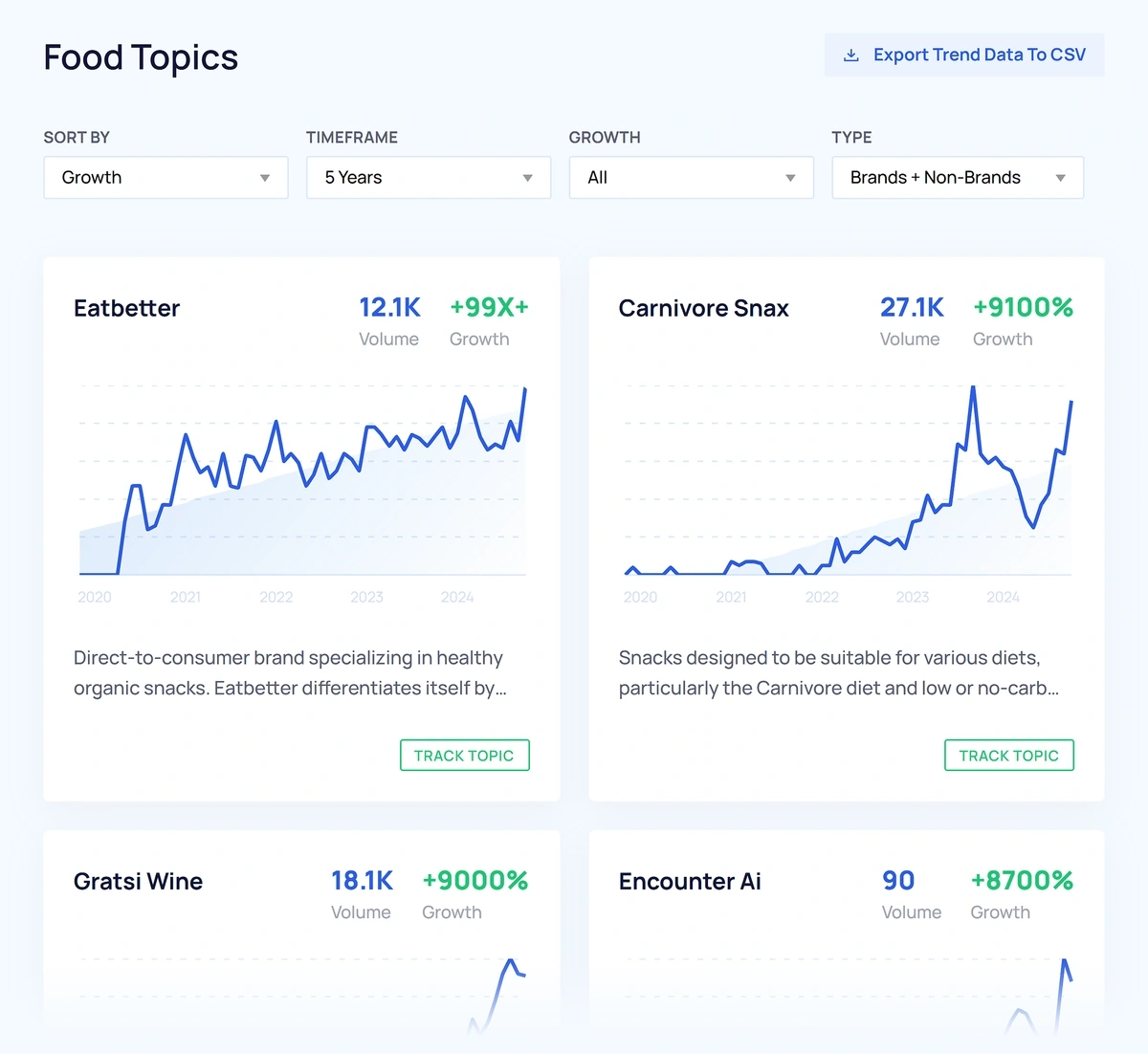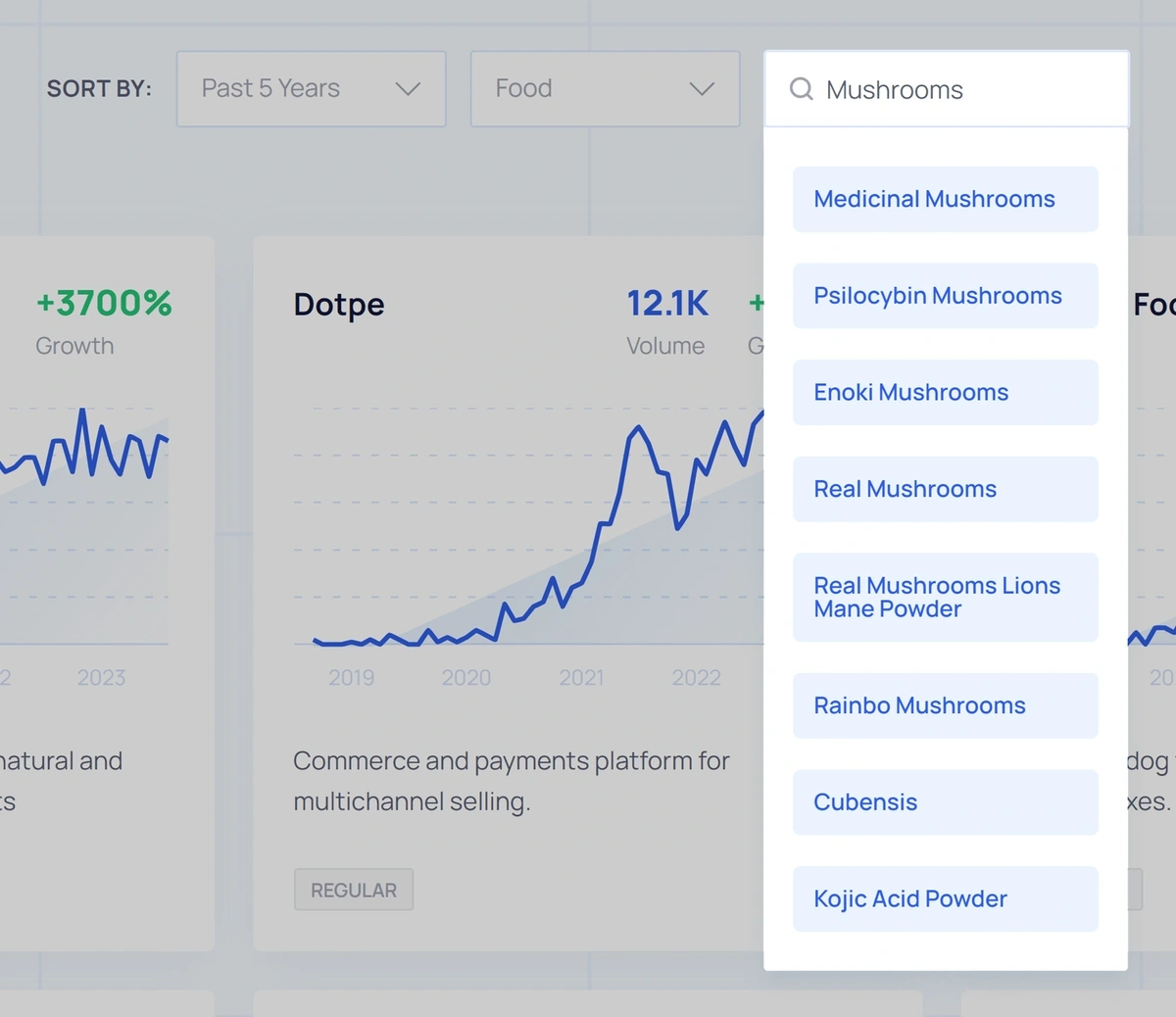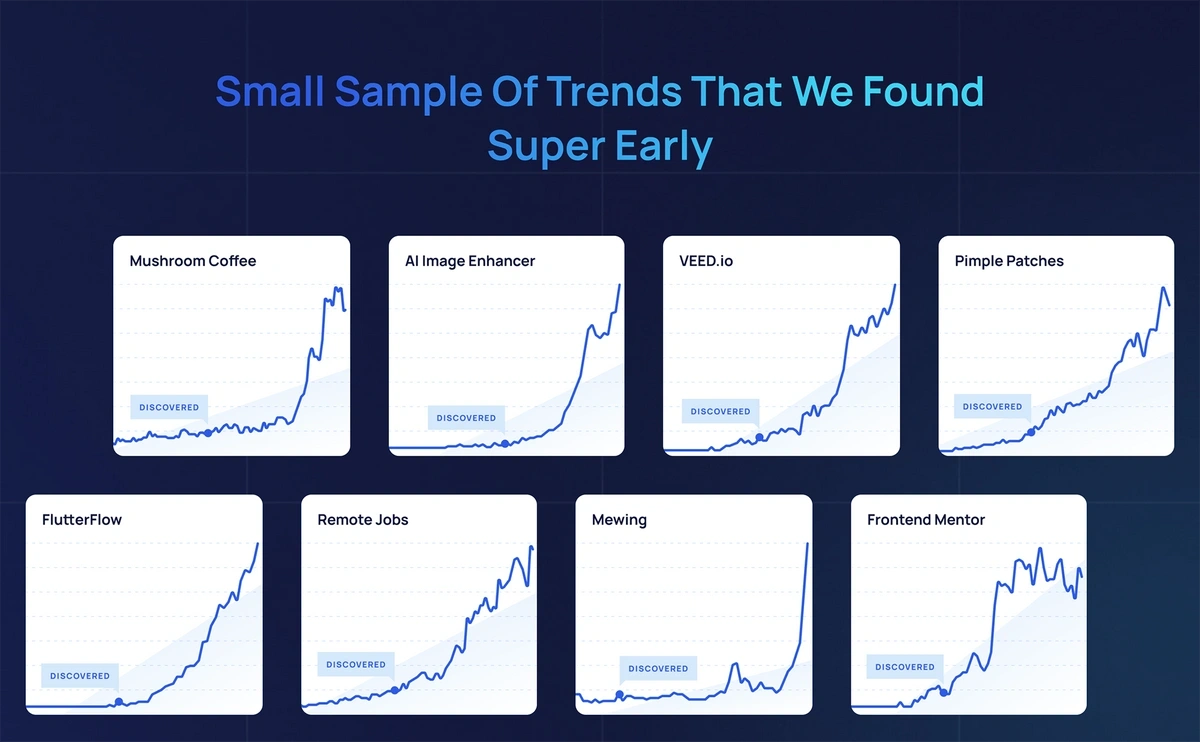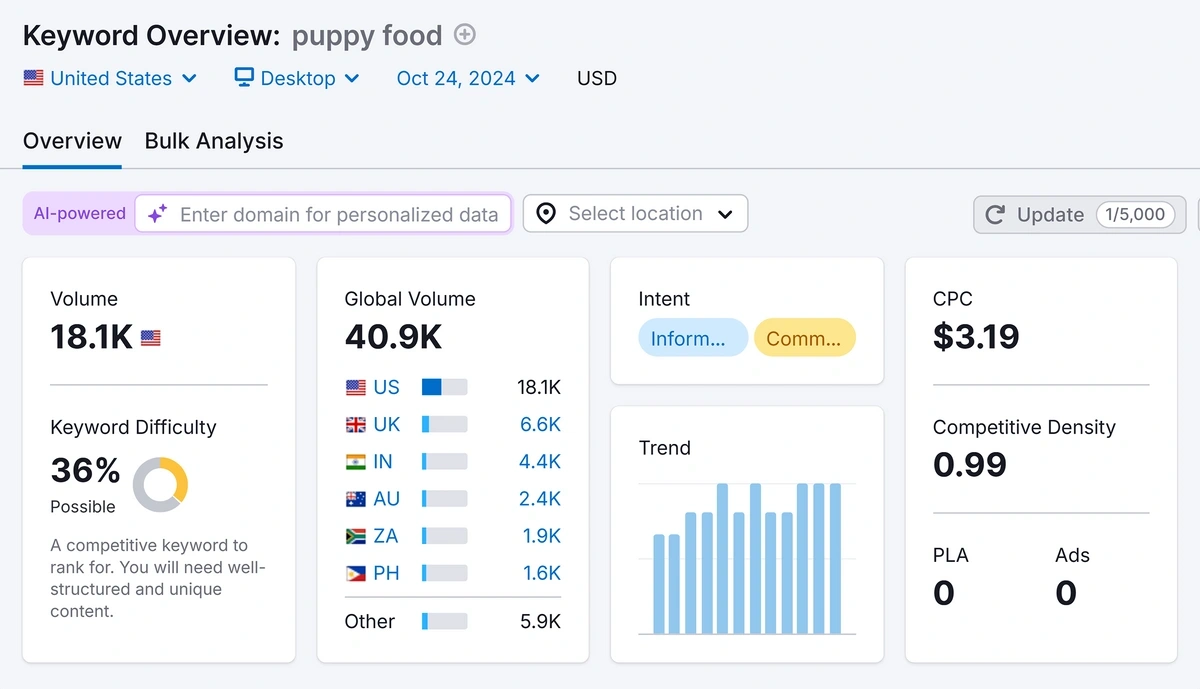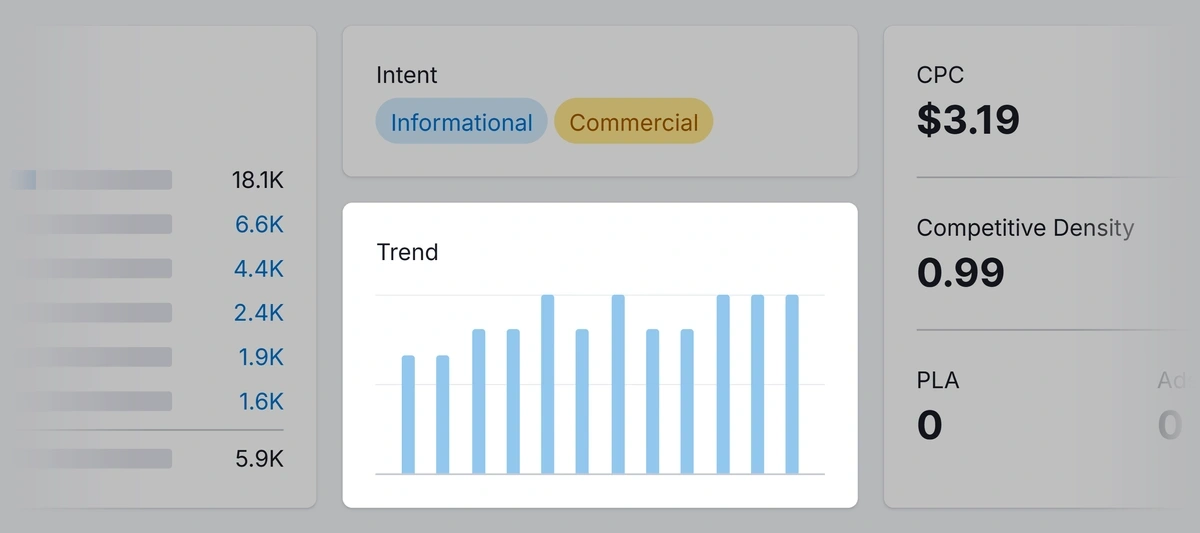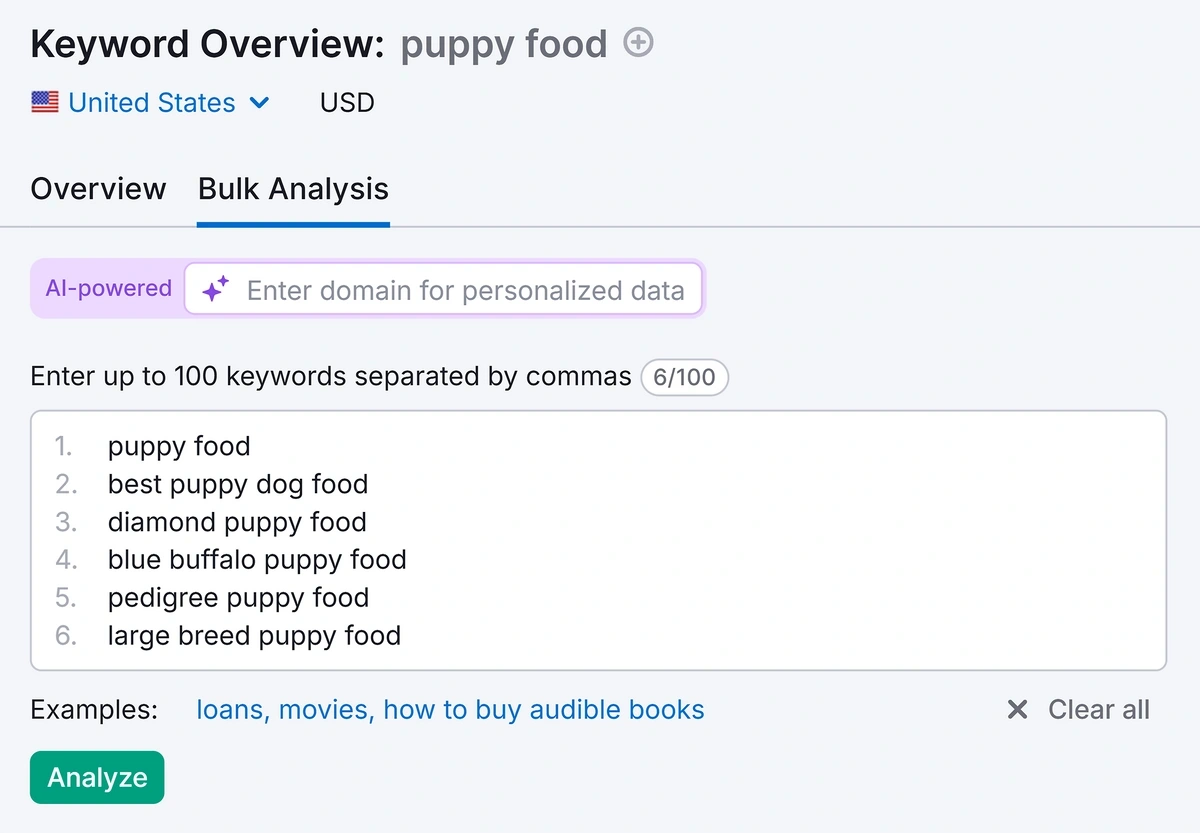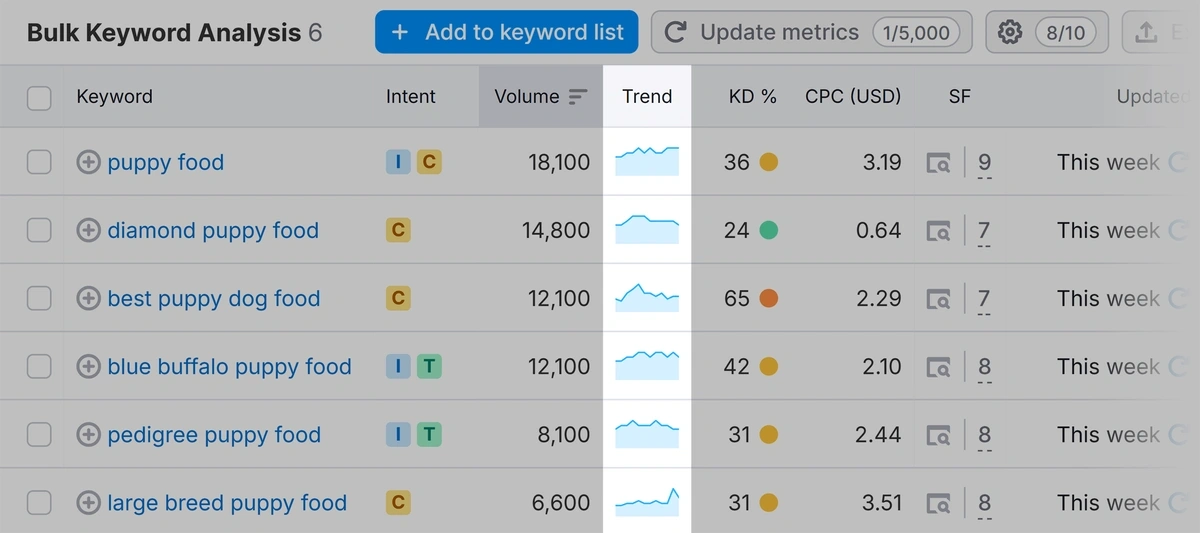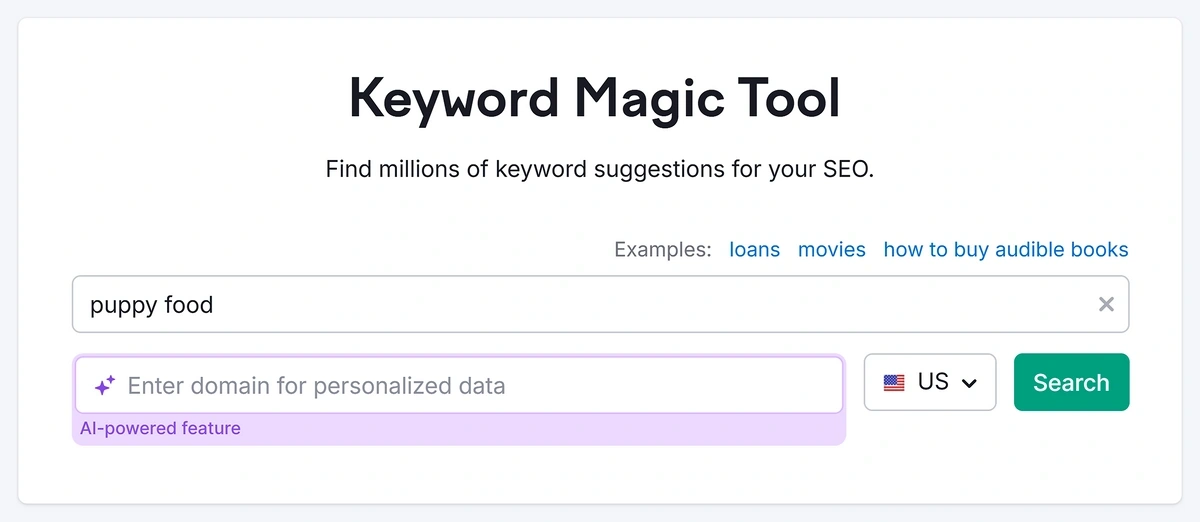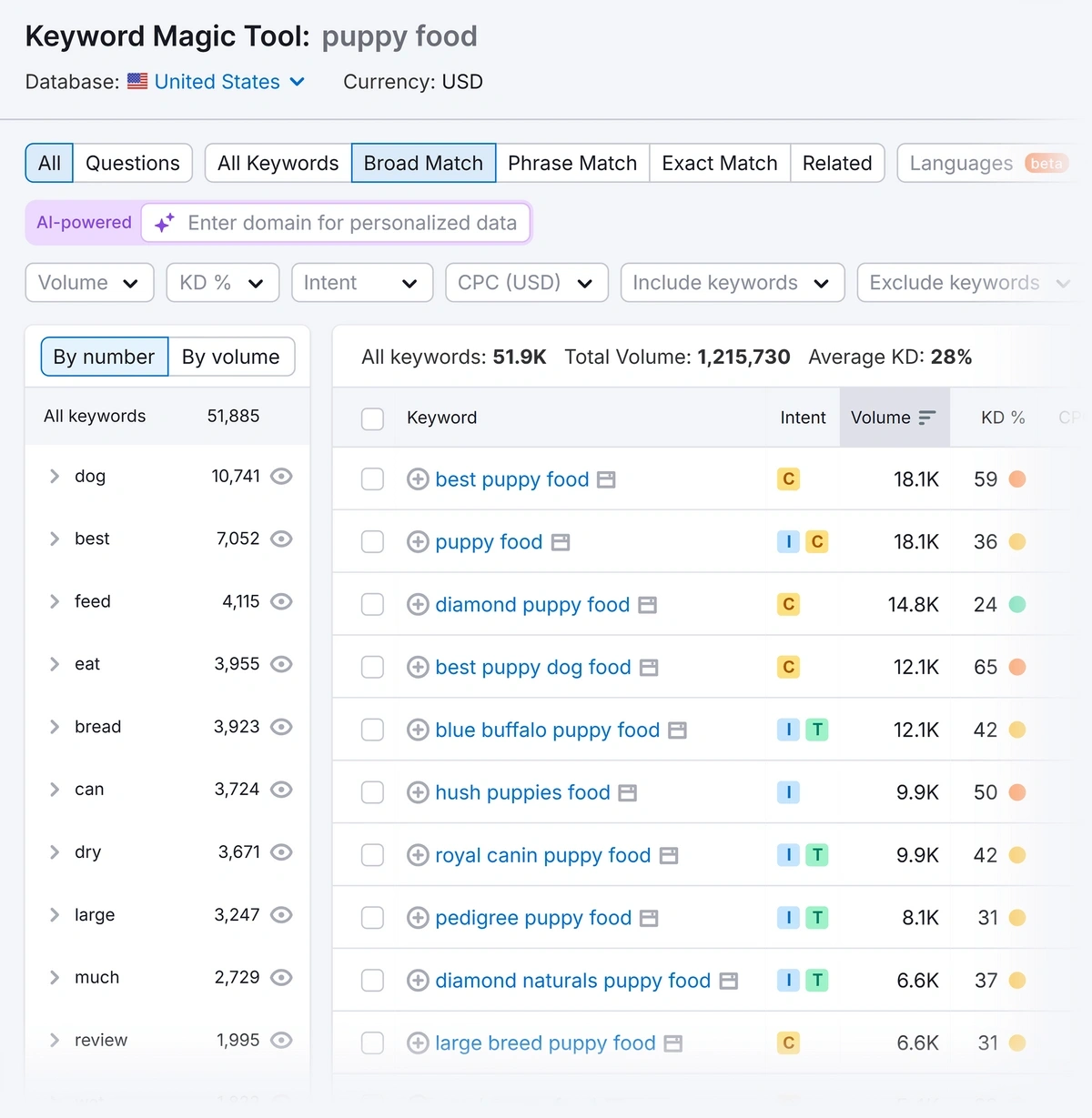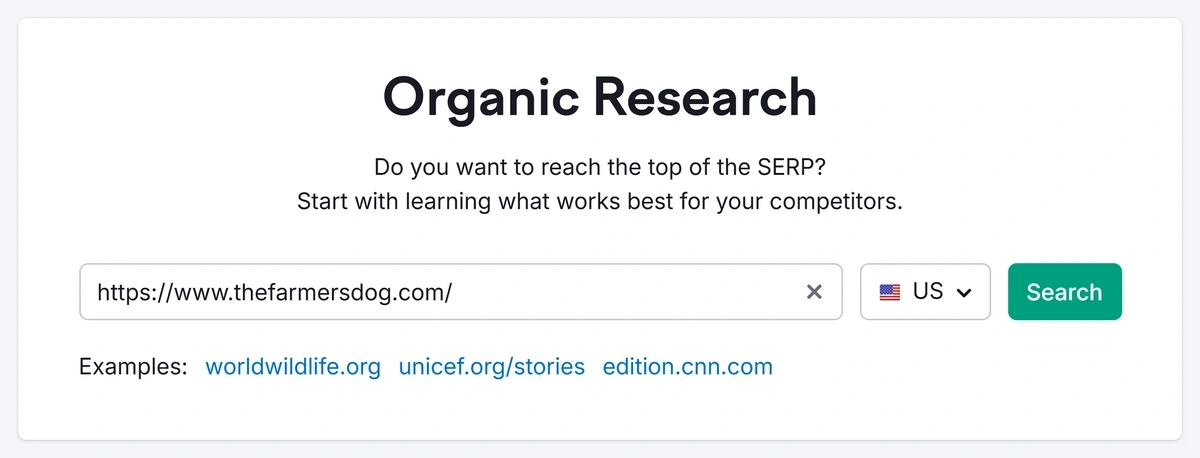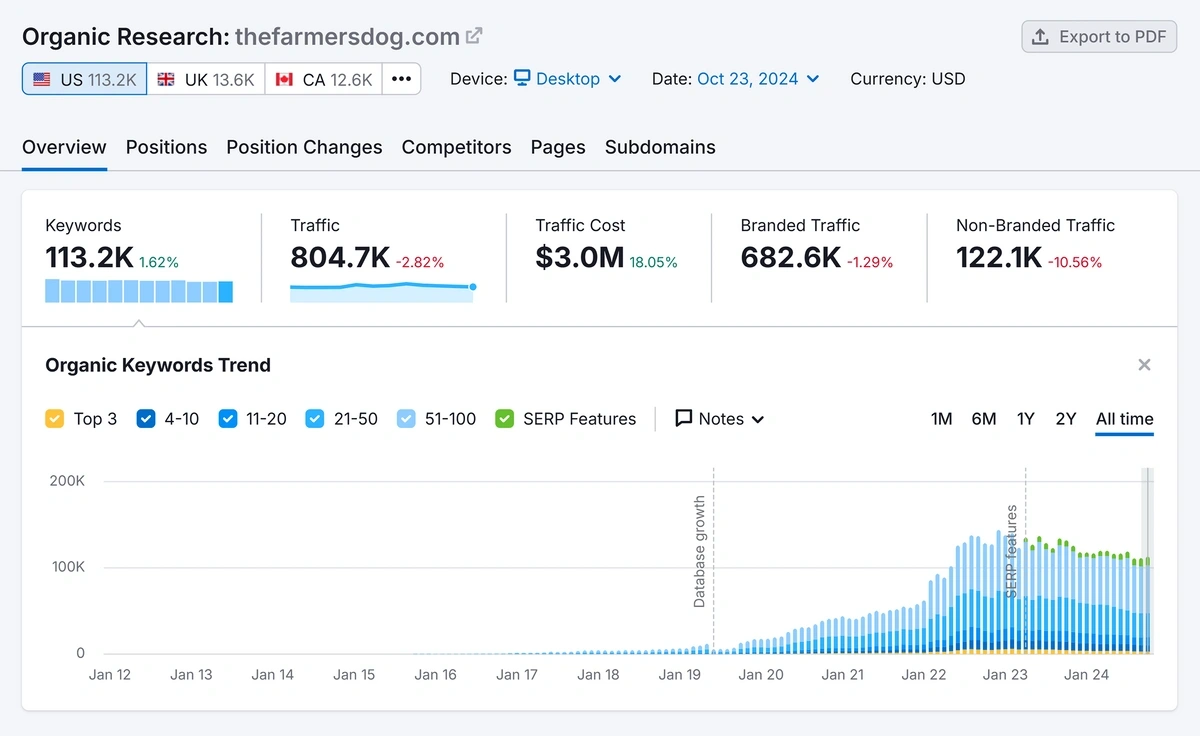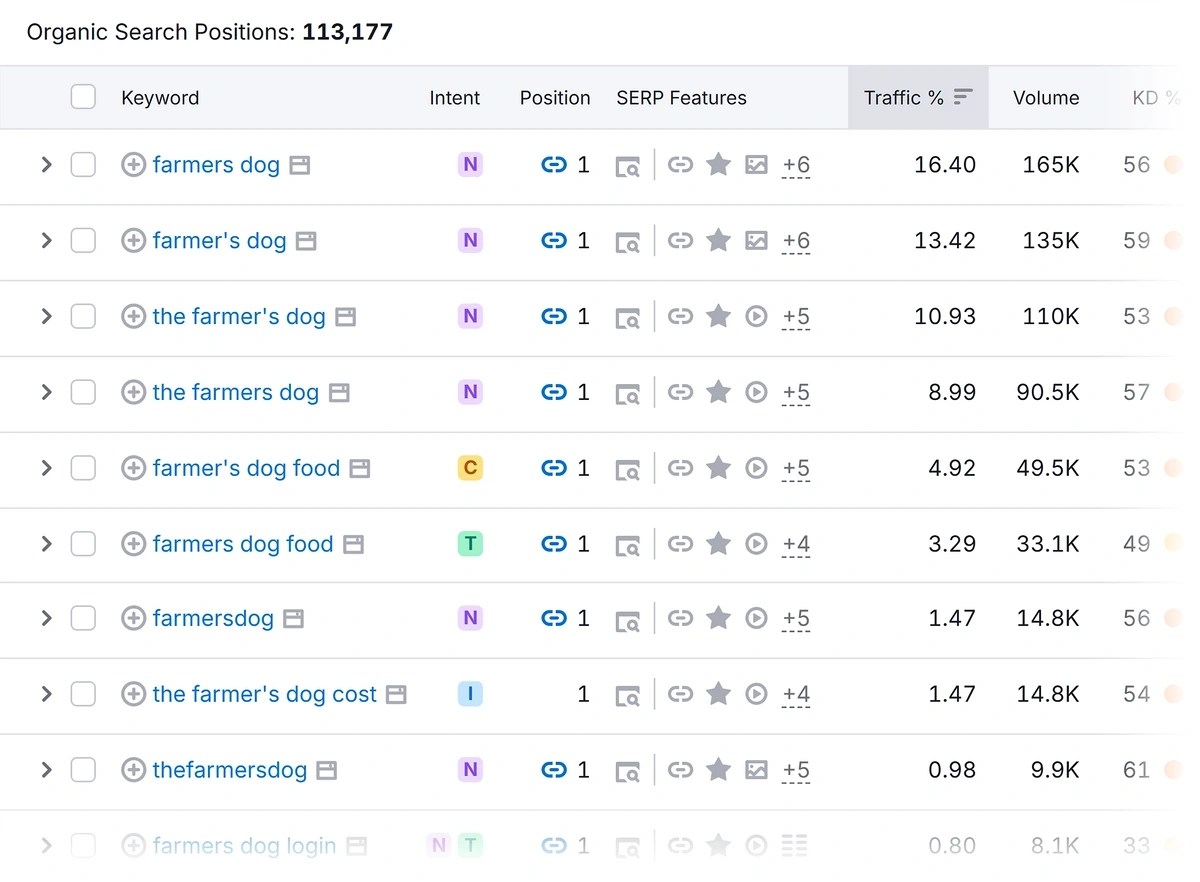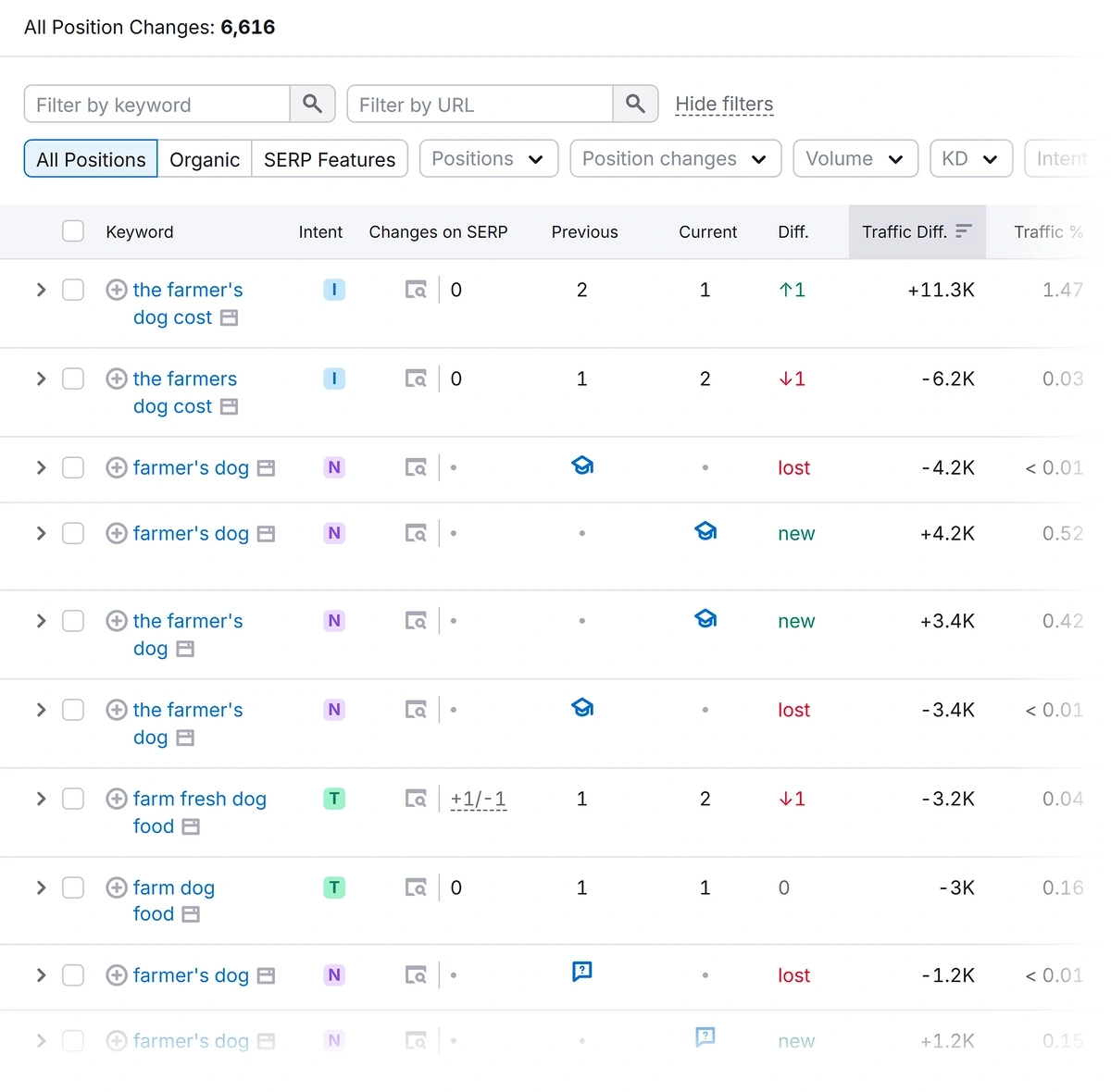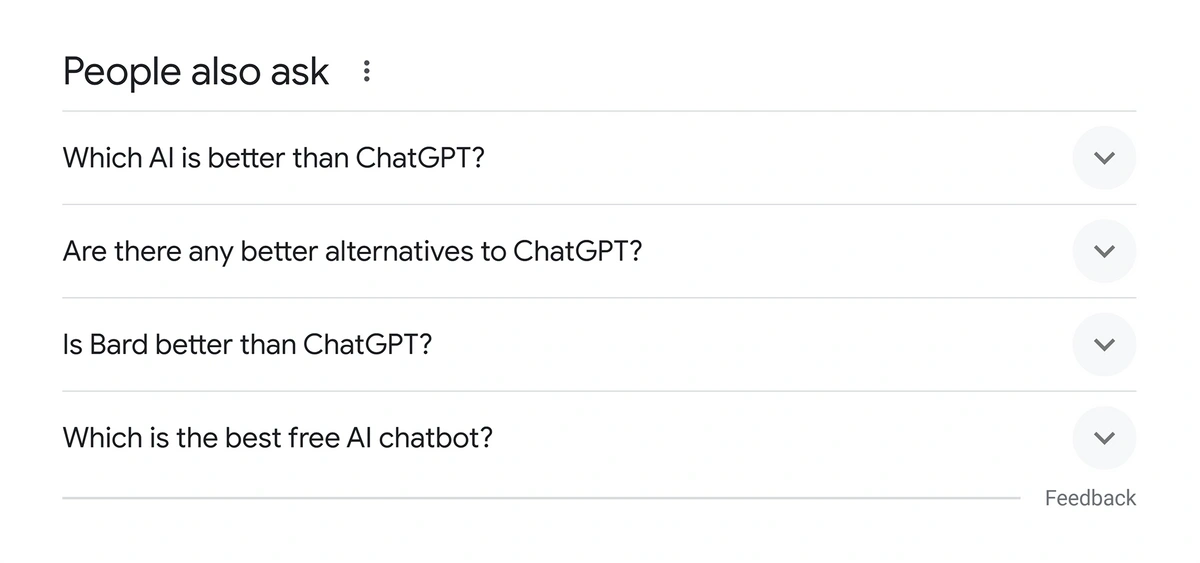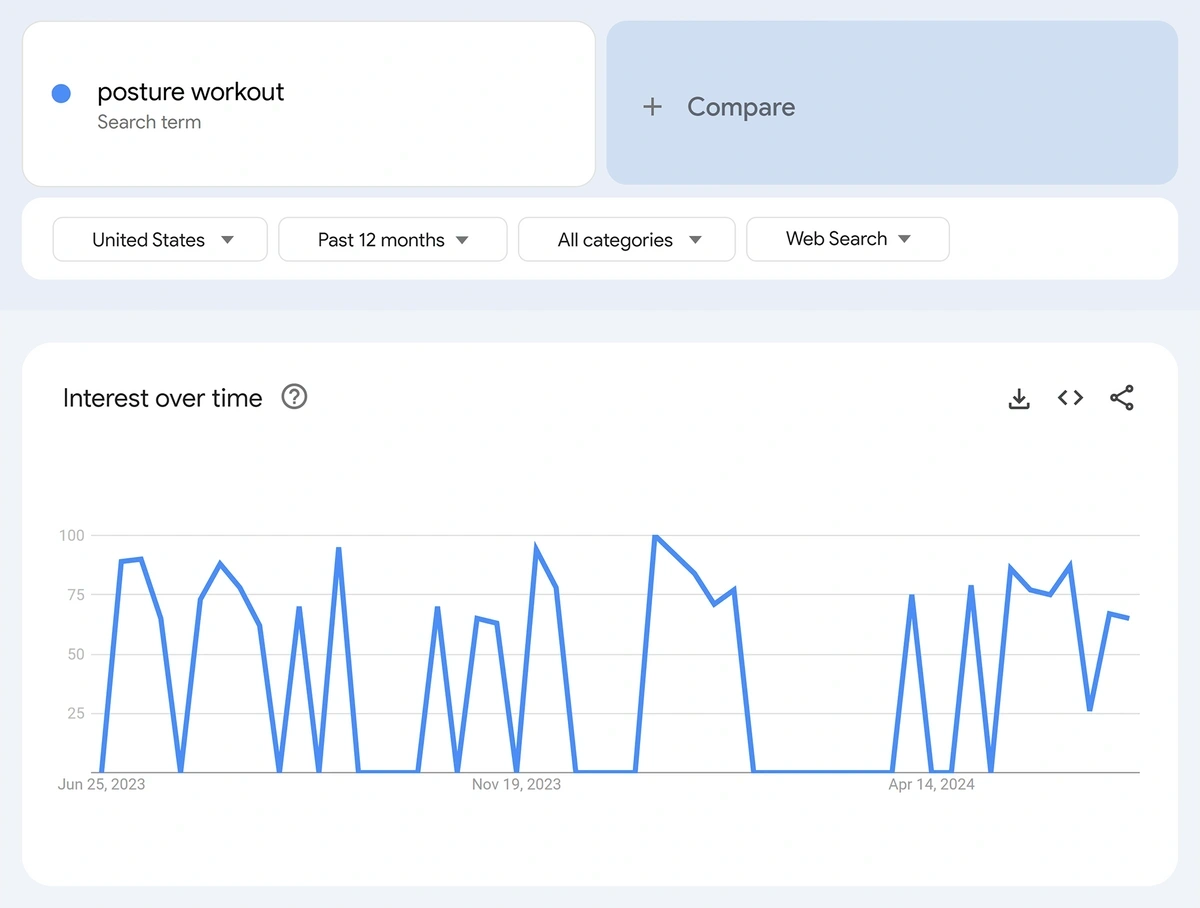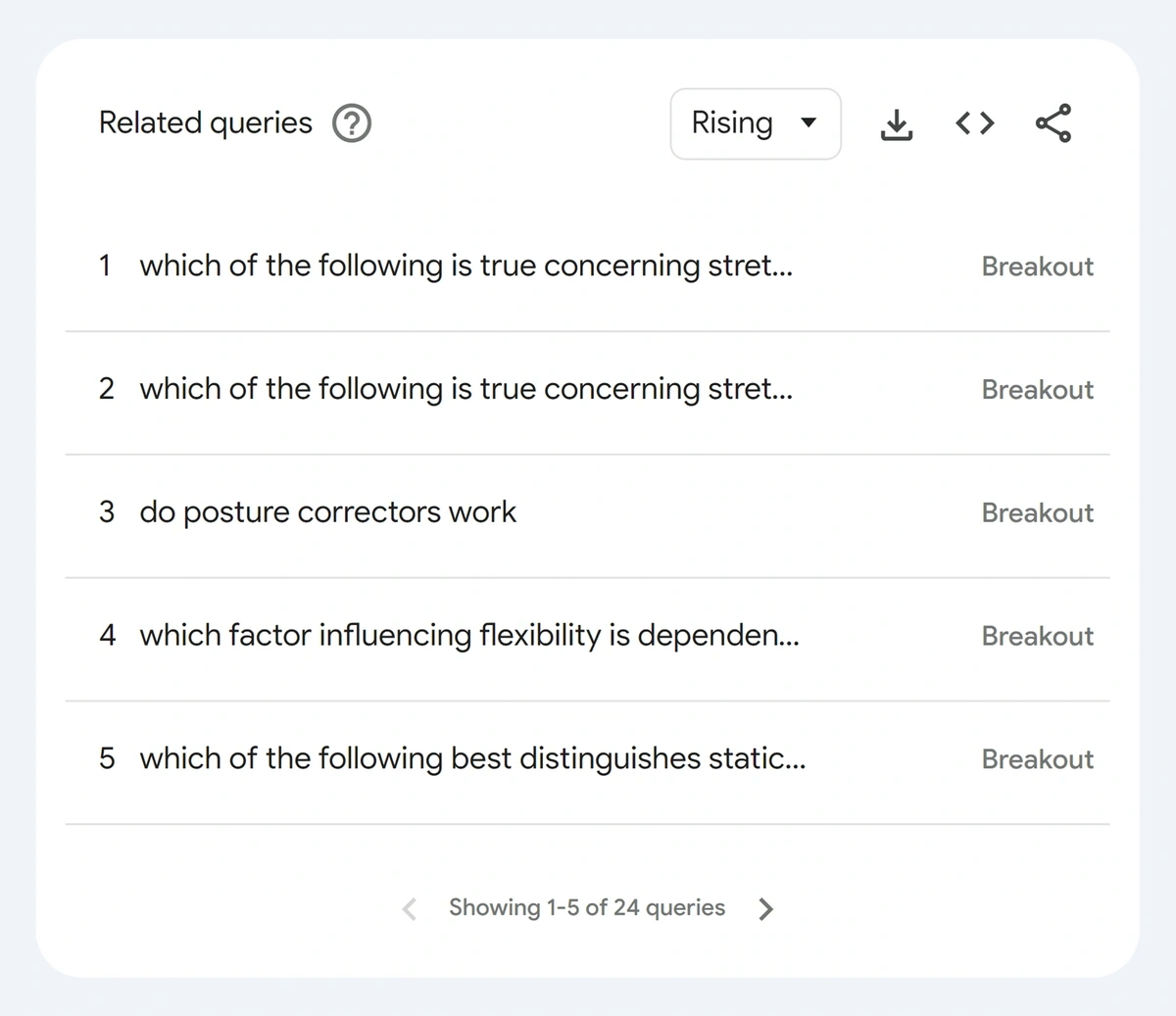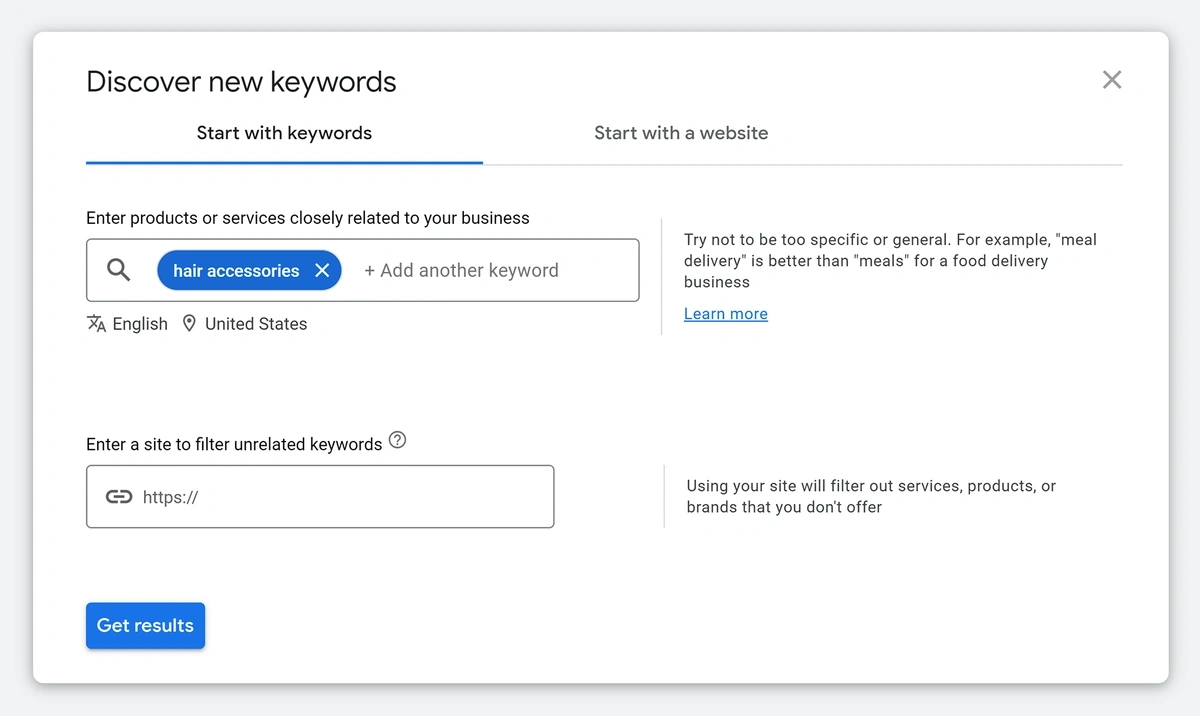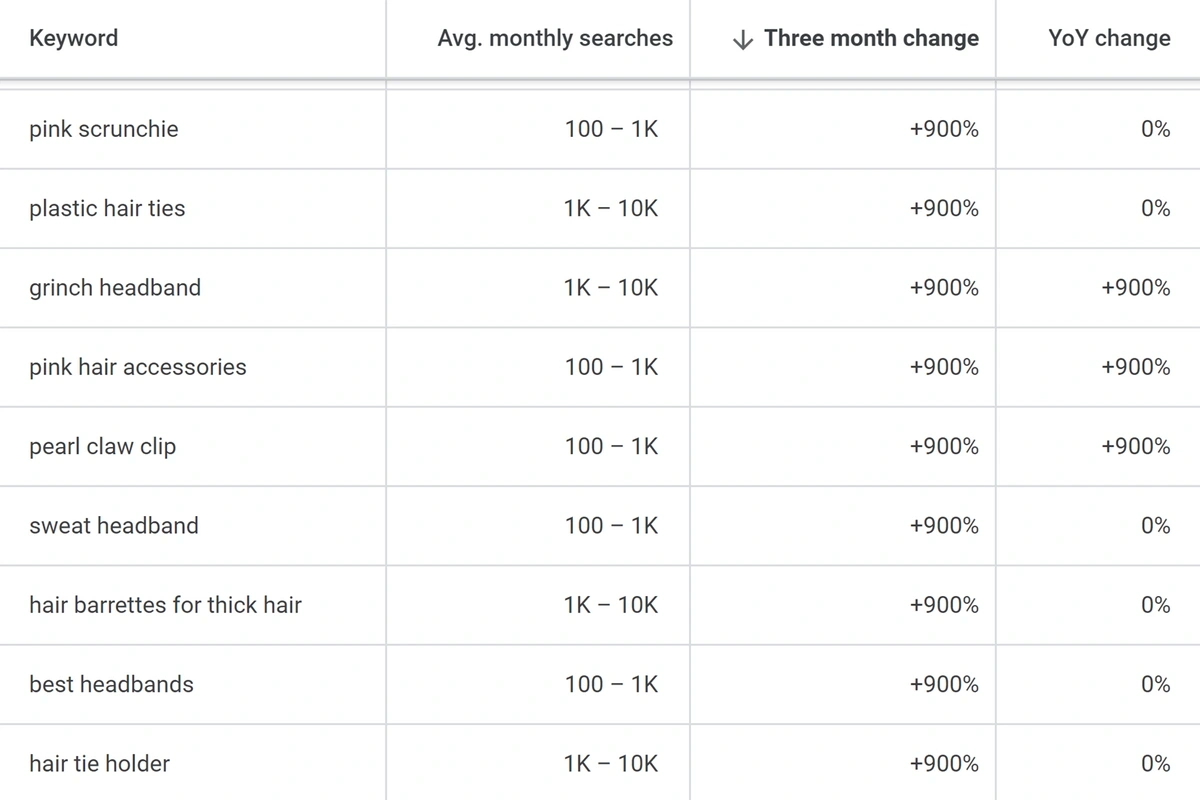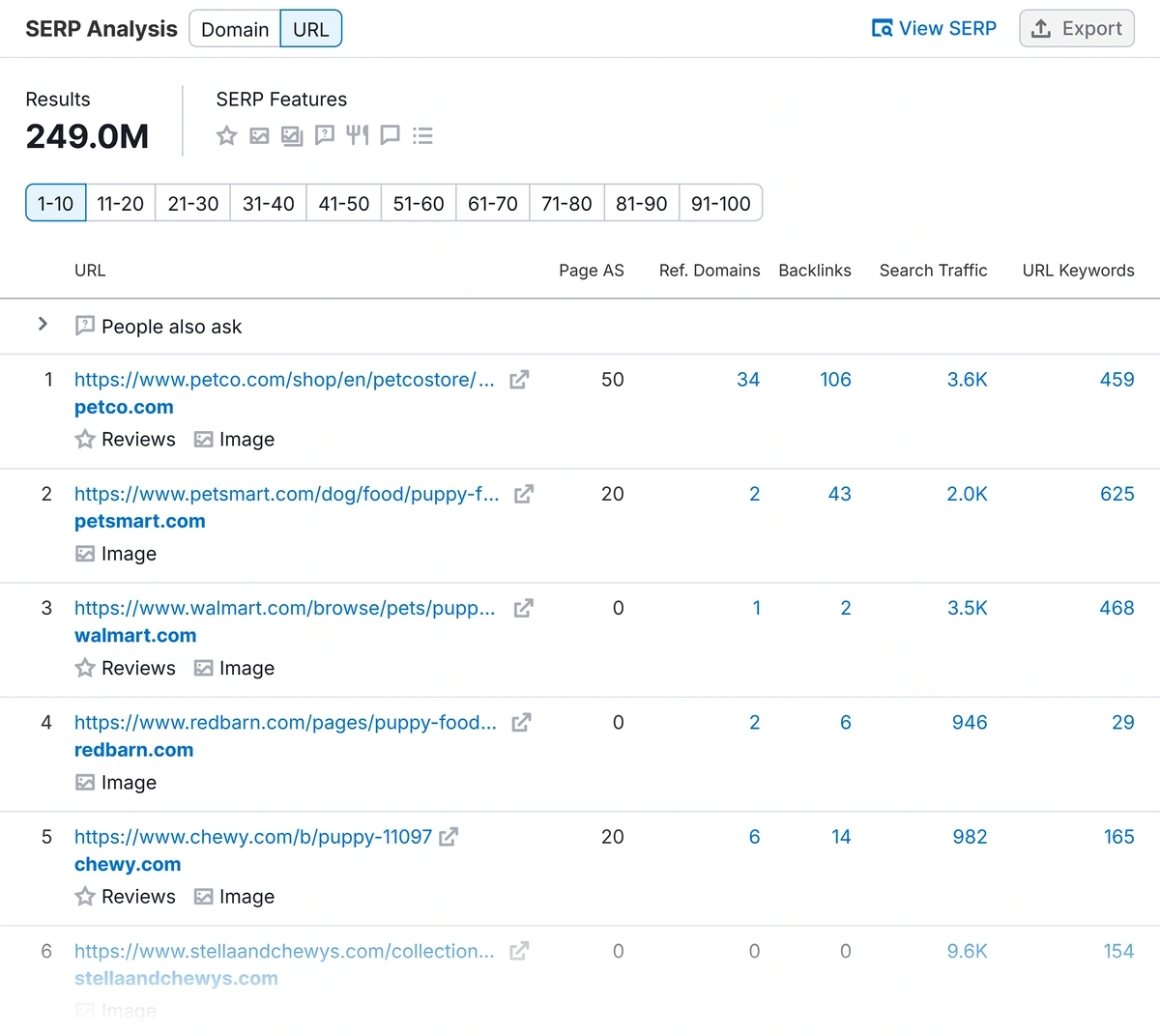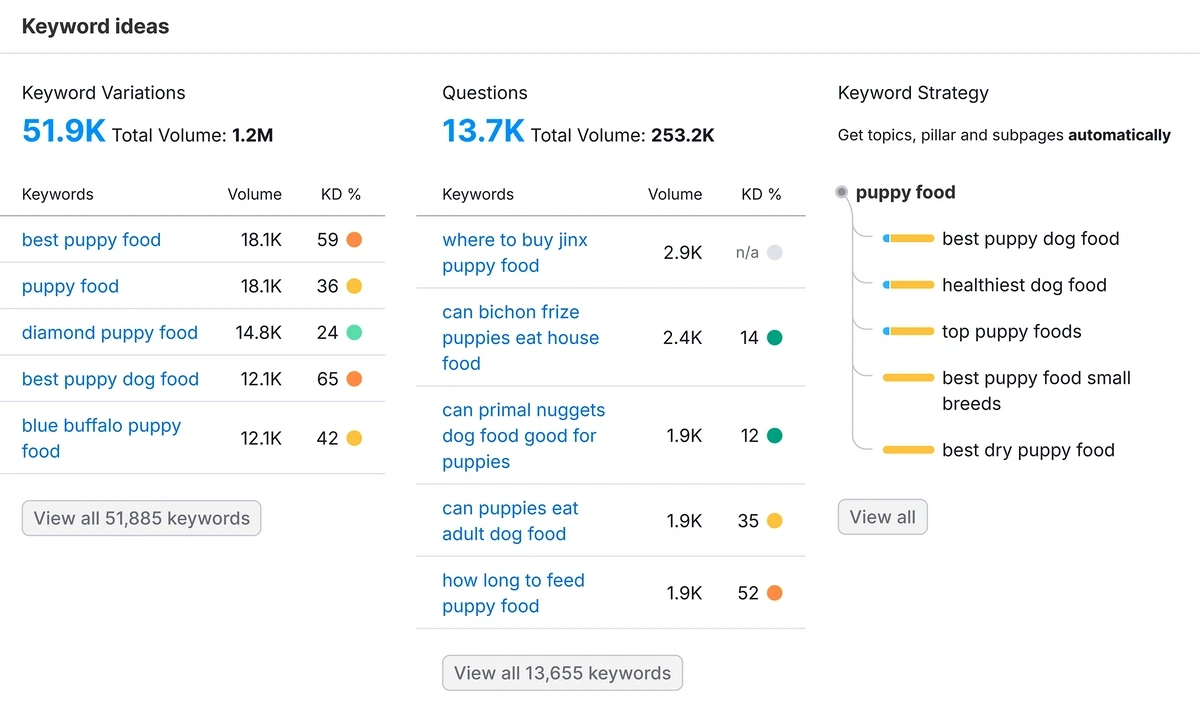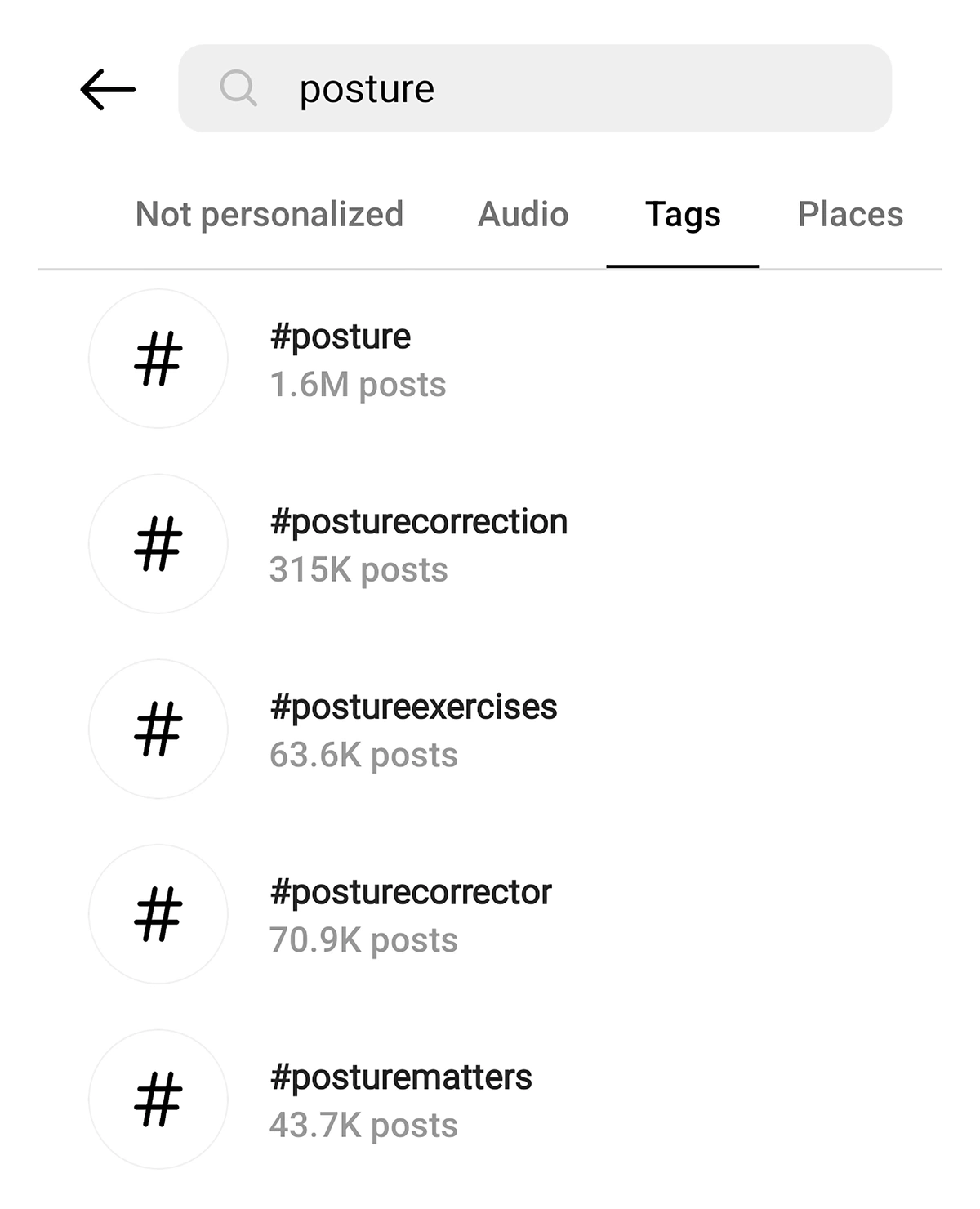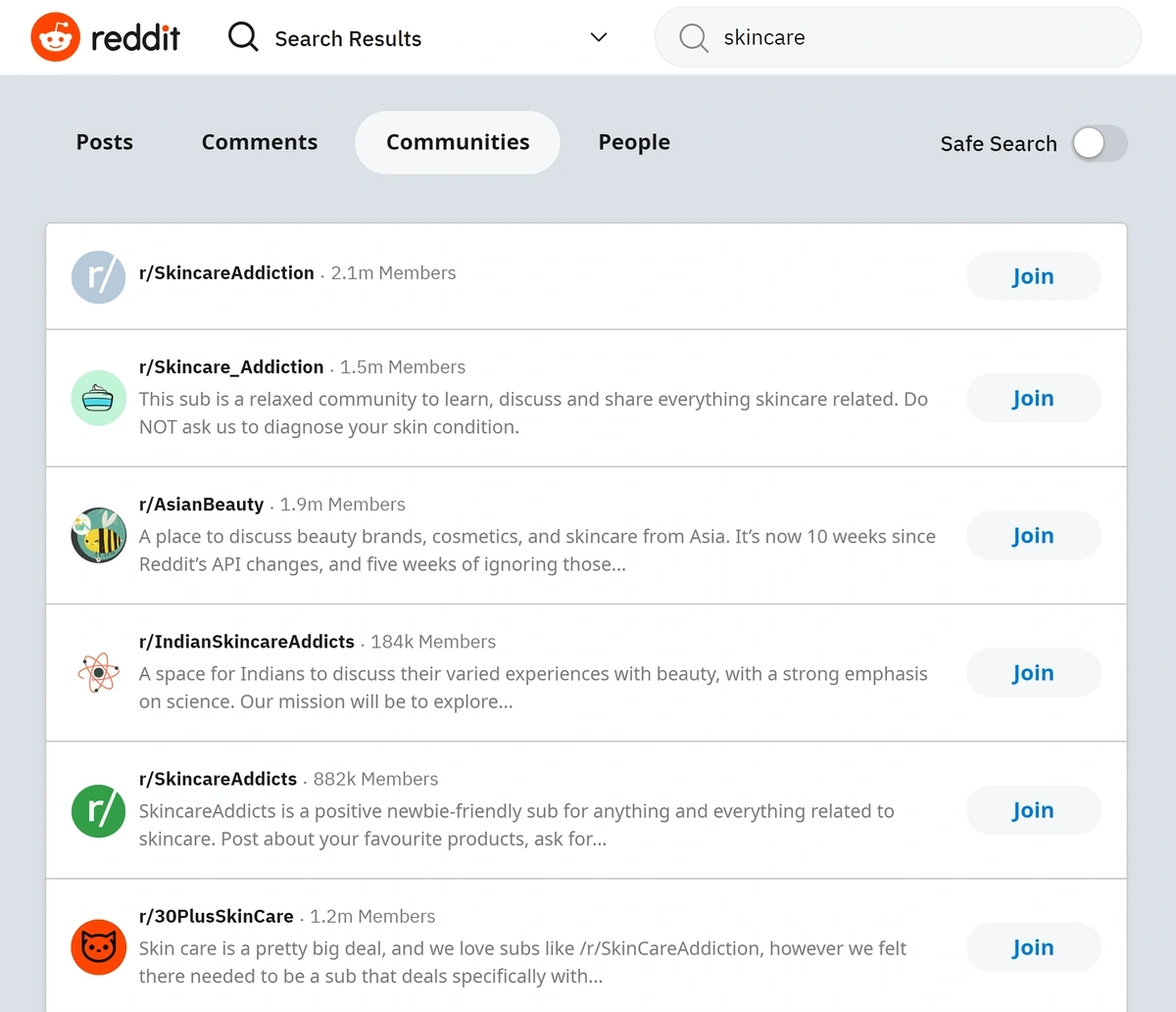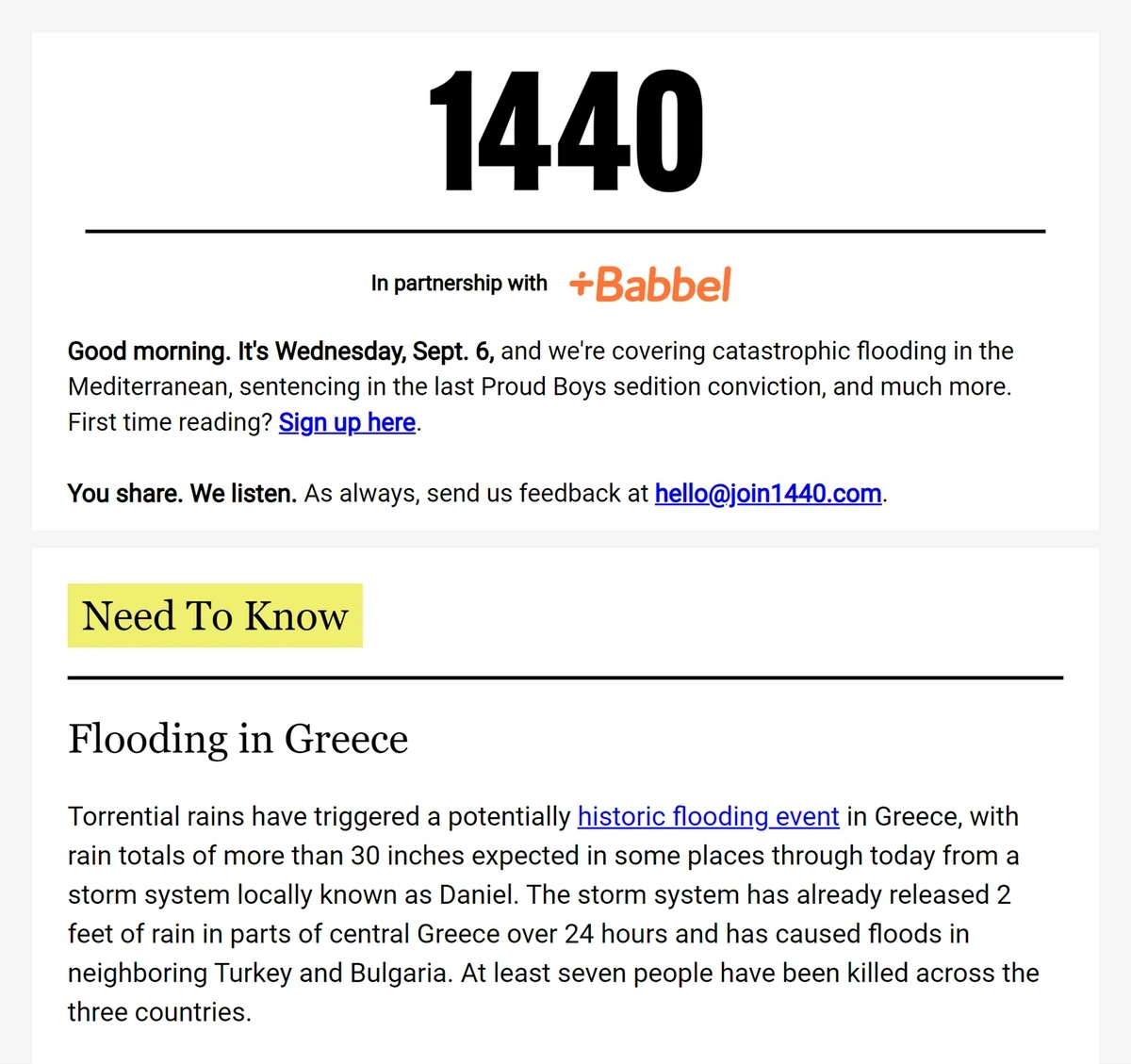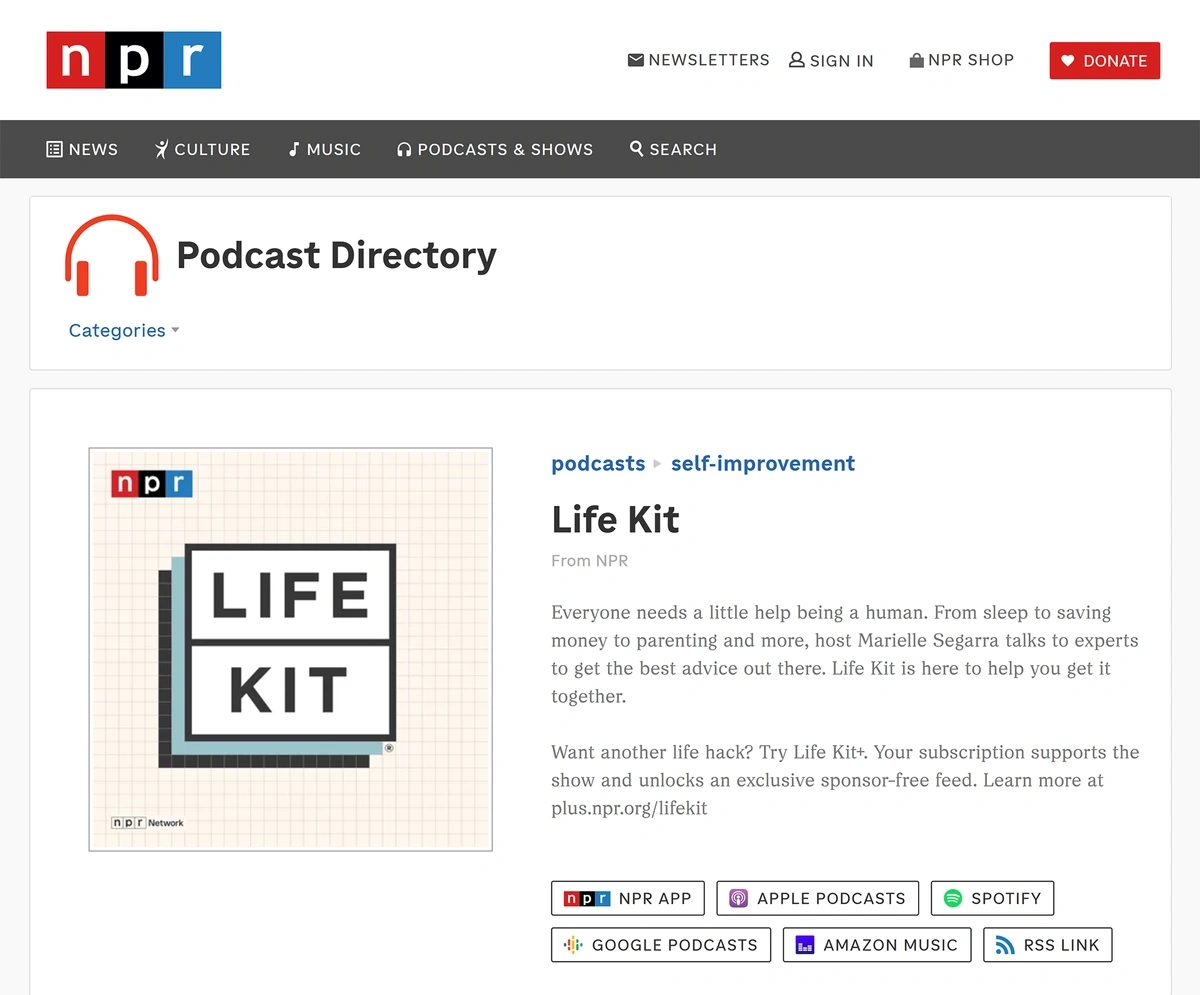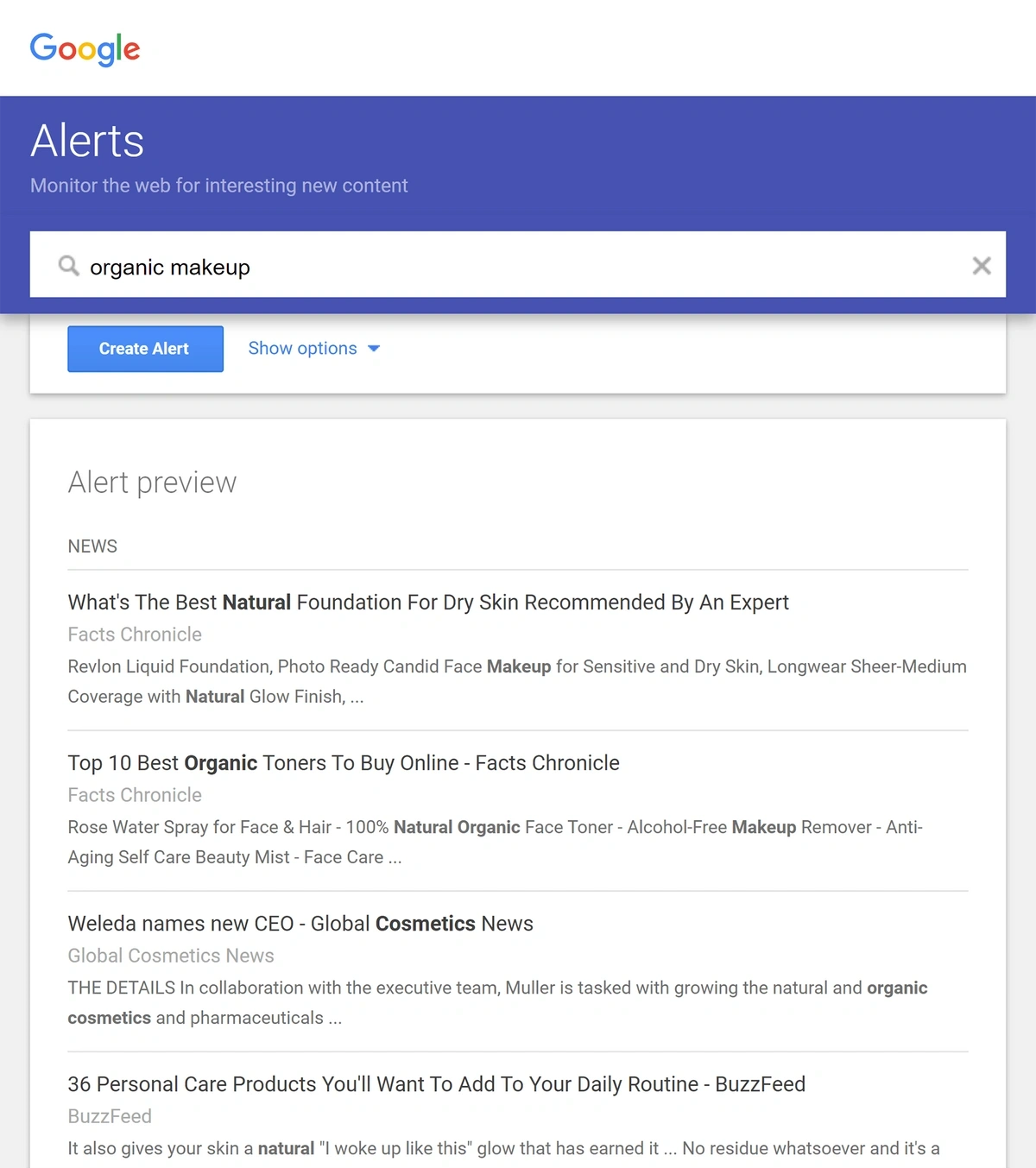
How to Find Trending Keywords for SEO: 6 Strategies
If you’re looking for rapid organic traffic growth, finding trending keywords can be a game-changer.
The top spot of Google’s search results has an average click-through rate of nearly 40%.
The fourth result? A CTR of just above 7%.
Ranking high is super important. But most top-ranking results are for highly competitive search terms that have existed for a while.
Finding trending keywords gives you an excellent first-mover advantage. You can capture huge amounts of traffic before big-name sites cover the topic.
Here are six ways to find trending keywords.
1. Discover Keywords Trends on Exploding Topics
The Trends Database from Exploding Topics has data on 1.1 million possible keywords.
Exploding Topics identifies trends based on Google Search volume.
It uses AI to sort trends. Then human researchers check the results to ensure the trend has the potential to take off.
You can use Exploding Topics in two ways:
- Find new trending keywords
- Check if a keyword you have in mind is trending.
First, find new keywords that are becoming popular. Search the Trends Database by category.
If you have a keyword in mind, type it into the search bar. Related trends will auto-populate.
This search feature is available as part of Exploding Topics Pro.
You can also refine all of the data on Exploding Topics by date range.
This approach helps you see whether it’s an emerging trend.
Exploding Topics has a proven track record of identifying hot topics before they become major trends. It could tip you off to trending keywords before your competition even knows about the trend.
2. Use Semrush To Analyze Trending Keywords
Semrush has a ton of powerful features that allow you to conduct keyword research for SEO.
Keyword Overview
Use the Keyword Overview tool to analyze the keyword’s trend (in volume) over time.
An upward trend indicates growing interest from searchers.
Enter the keyword, select your location, and hit the “Search” button.
Here’s what the report looks like:
Semrush shows you important SEO metrics like:
- Search Volume: The average number of monthly searches for the keyword. A higher volume means more potential traffic.
- Keyword Difficulty (KD %): An estimate of how hard it'd be to rank organically for the keyword. A higher percentage indicates more competition.
- Cost Per Click (CPC): The average cost advertisers pay for each click. Helpful if you plan to run PPC campaigns.
- SERP Analysis: Information about special search results (like featured snippets, reviews, or images).
Now look at the “Trend” chart to see the changes in the keyword’s search volume.
We can also do this in bulk.
Click the “Bulk Analysis” tab to analyze and view the trends of up to 100 keywords.
Type in your keywords and click the “Analyze” button.
Look at the “Trend” column to see the trend chart for each keyword.
From here, you can click on the keyword to view its Keyword Overview report and get more details.
This is a great way to find top keywords for SEO.
Keywords that are trending up might be a good fit for your site.
Keyword Magic Tool
The Semrush Keyword Magic Tool helps you to see keywords that are related to trending keywords. This can help you to expand your topic coverage.
Enter your primary keyword, select your location, and hit the “Search” button.
You can filter results by:
- How closely they match your primary keyword
- Search intent
- How difficult the keyword is to rank for
- Volume, which means the number of searches per month.
A high search volume may mean that you found a trending topic.
Organic Research Report
You can use Semrush’s Organic Research tool to find trending keywords your competitors use.
Enter your competitor’s domain in the search box.
Select the location. Then click the “Search” button.
The "Organic Keywords Trend" chart shows the number of keywords the domain has ranked for.
You can check the dates to see the trends.
Next, you can filter this chart data by time and position.
Go to the “Positions” tab first to see all the organic keywords your competitor ranks for.
Then click on the “Position Changes” tab to see how individual keyword rankings have fluctuated.
Keywords tagged “New” represent those that your competitor has started ranking for recently. These might be emerging trends.
You can change the dates to see changes over a different period of time.
Build a winning strategy
Get a complete view of your competitors to anticipate trends and lead your market
3. Use Google’s SEO Tools
Google’s autocomplete feature shows related search queries.
It chooses these suggestions based on various factors, including trending searches.
In an Incognito window, start typing the name of your topic to see suggestions.
Using Incognito will ensure that your personal browsing history doesn't influence your results.
Another strategy is to look at Google’s “People Also Ask” section.
Search for your keyword. For this search, we used the keyword “ChatGPT alternatives.”
You’ll see a list of related questions that might be great long-tail keywords.
Google Trends
Google tracks trending topics in its own tool, Google Trends.
This free tool shows search data over time on a chart. You’ll want to look for trends climbing over time.
Google Trends also provides “related queries.” These are keywords that are hyper-relevant to your primary keyword. They could be relevant keywords too.
You can use the drop-down menu to select:
- Top queries: the most popular searches
- Rising queries: search terms that have seen the biggest increase in volume recently
- Breakout queries: search terms that have recently increased by more than 5,000%.
Breakout topics are the most important.
Those search terms are brand new, and getting more popular very quickly.
That makes them ideal SEO keywords.
Google Keyword Planner
This is another valuable tool from Google. You need a Google Ads account to access it.
Inside the Google Keyword Planner, start with a few keywords related to your business.
The dashboard will give you dozens of options for sorting and filtering the list of keywords recommended by Google.
One of the best features for finding trending keywords is the “change” columns. These can help you identify most searched keywords that are on the rise.
You can also sort the results by competition or volume to find a keyword that might be a great fit for a blog post.
Research these trending keywords in Semrush Keyword Overview to see if they fit your brand.
Enter the keyword into the Keyword Overview tool to analyze it.
In addition to looking at the metrics we stated before, scroll down to the "SERP Analysis" section to see the top-ranking pages.
You can also explore the “Keyword ideas” section for:
- Related keywords
- Questions related to specific keywords
- Topic clusters.
4. Keep a Close Eye on Social Media
Countless trends have started on social media, so scouring the platforms for trending keywords makes sense.
Most often, the hashtags used on top social media platforms are similar to popular keywords your audience is searching for on Google.
Most social platforms have an area of the app that lists trending topics or hashtags:
- X/ Twitter: Current trends on X (Twitter) are easy to find in the “Trending” section.
- Pinterest: A few “Popular on Pinterest” topics will appear once you tap the search bar.
- Instagram: Search for a term and then look at the “tags” section.
TikTok's trend data is in the Creative Center. You’ll need a TikTok for Business account to access it.
This comprehensive tool lists trending hashtags and provides detailed analytics for each one.
Like Google Trends, you can see most searched keywords over time and how much volume there is for each of them.
If the interest is climbing toward 100, the keyword is reaching peak popularity.
Once you’ve found trending keywords on social media, you can fine-tune them for SEO.
For example, we’ve seen that “posture stretches” is trending on TikTok.
- Use a keyword tool (like Semrush’s Keyword Overview) to find the volume. Low volume is OK since it means the trend may be taking off.
- Check the keyword difficulty. It may already be too high for you to have a chance of ranking in the SERPs.
- Do a search on Exploding Topics to see what kind of performance is predicted for the keyword.
5. Listen to Your Audience on Reddit
If you can find out where your audience hangs out on Reddit, you’ll get a first-hand look at their conversations. It’s an excellent place to discover trending keywords.
Likely, Reddit topics are the same topics people are searching for on Google.
These conversations happen in real-time. Explore a wide range of subreddits for the best chance at finding a trend before it’s huge.
Take the skincare market, for example. Typing “skincare” into the search bar brings up multiple subreddits like “Sephora,” “skincareaddiction,” and “skincare_addiction”.
You can scroll through any of these subreddits and look for keyword trends.
At the top of each subreddit, you’ll also see drop-down menus that let you sort the comments.
- Try sorting by “hot,” “top,” or “rising”.
- Adjust the date range to see what could be a breakout trend.
When looking in the “makeupaddiction” subreddit, there are several popular posts about bridal makeup in the past few months. Plus a few about natural or barefaced bridal makeup.
If you’re in the skincare market, this would be a trending keyword to research and use for SEO.
One keyword research tool that’s specifically focused on Reddit is Keyworddit. This is like a scaled-down version of Google Trends for Reddit.
6. Follow Industry News
News and pop culture drive a tremendous amount of Google searches.
By keeping up-to-date on current events in your space, you can find newsworthy, trending keywords and adapt them for your brand.
We even have a post on top trending topics to make it easy for you to find keywords like this.
By consistently reading the news, you can understand how these trending topics impact your industry.
Look at the news from the same perspective as your audience. You can try:
- Reading articles from popular blogs
- Subscribing to industry publications
- Paying attention to the economy
- Following social media influencers.
Plenty of tools are available to make this an easy and efficient process.
For example, 2.8 million people subscribe to the 1440 daily newsletter. The newsletter is written with the goal that readers can go through the entire email in just five minutes.
You’ll get an overview of “need to know” topics, plus highlights from pop culture, tech, politics, and business.
If your target audience is a Millennial or Gen Zer, subscribe to a newsletter like NPR’s Life Kit newsletter.
It covers trending topics from the health, parenting, and lifestyle sectors.
Life Kit has a podcast, too. So you might find trending keywords simply by scrolling through the podcast episode titles.
Setting up Google Alerts is another extra step worth the effort.
Top Takeaways About Finding Trending Keywords
Now that we’ve answered the question of how to find trending keywords for SEO, it’s time to build your strategy:
- When you identify a trending keyword in pop culture or the news, see if it’s starting to trend on social media or with Reddit users.
- Run it through Google Trends to catch any other breakout search terms
- Try Google searches and see what autocomplete results suggest
- Check Exploding Topics to see how the keyword has performed in the past few years
- Research the keyword’s SEO potential using Semrush.
Incorporate these strategies into your keyword research process and increase your chances of seeing your brand on the first page of Google’s search results.
Stop Guessing, Start Growing 🚀
Use real-time topic data to create content that resonates and brings results.
Exploding Topics is owned by Semrush. Our mission is to provide accurate data and expert insights on emerging trends. Unless otherwise noted, this page’s content was written by either an employee or a paid contractor of Semrush Inc.
Share
Newsletter Signup
By clicking “Subscribe” you agree to Semrush Privacy Policy and consent to Semrush using your contact data for newsletter purposes
Written By


Alison is an accomplished copywriter with proven success in editing, marketing, research, and management. Before writing for E... Read more

